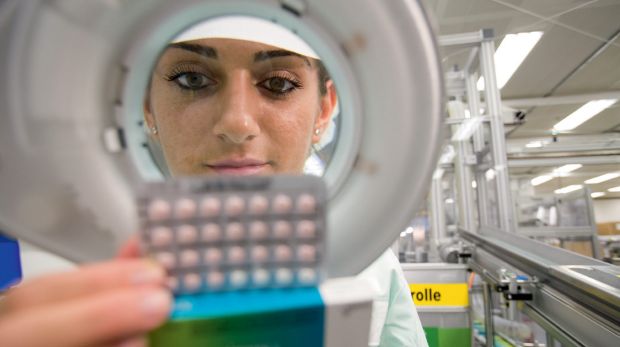
The deal is a major coup for Australian scientists. Photo: Bloomberg
The global obesity epidemic has paved the way for local scientists to drive a deal that could be worth hundreds of millions of dollars, and is potentially the richest of its type seen in Australia.
Shares in Pharmaxis surged on Monday on news it has signed a deal with a global drugs major to pursue development of a compound developed by local scientists which has barely made it to the test tube.
Under the deal, European drug company Boehringer Ingelheim is to pay Pharmaxis as much as €195 million ($278 million) – including €55 million upfront – for a compound to treat liver problems that is yet to begin formal clinical trials.
As the compound proceeds through the various stages of drug research and development, including lodging and receiving government approvals for launch, Pharmaxis is set to receive further payments.
In all, Pharmaxis said the deal could be worth as much as $750 million – for a company that was valued in the sharemarket at only $50 million before trading commenced on Monday morning.
Since then, its shares have surged to close on Monday afternoon up by 51 per cent to 25¢.
“It validates our scientific and business expertise,” Pharmaxis chief executive Gary Phillips said of the agreement.
The deal also helps to draw a line underneath the company’s problems with its Bronchitol drug for respiratory problems, which ran into difficulties after United States authorities refused to license the treatment, forcing Pharmaxis to undertake further research work, which slashed the company’s valuation.
“The reason for the dollars is there are few treatments for this stage of liver disease – non-alcoholic steatohepatitis? [NASH, a liver inflammation that is a build-up of fat, the step before fatty liver disease,” said David Blake, the editor of Bioshares.
“Why would Boehringer Ingelheim fork out that sort of money? The real dollars here are because it is a potentially big drug market.
“There is a lot of water to pass under the bridge,” he said of the development program, which will take many years to complete, “but it allows the company to get a new lease on life after the issues with Bronchitol.”
Under the deal with Boehringer Ingelheim, Pharmaxis will receive follow-up payments as research work continues, with the next cheque due once the drug enters phase two development work. And, if the compound does make it to market and is launched, then Pharmaxis will be entitled to continued royalty payments from Boehringer.
In further good news for Pharmaxis investors, the European company is to fund all the research work, saving them tens of millions of dollars in spending.
“Three to 5 per cent of the US population is thought to have NASH – with no treatment,” Mr Phillips said.
As a result, there has been a rush by global drug companies to pursue research work in the the field. A research paper published in 2014 highlighted the field of semicarbazide-sensitive amine oxidase (SSAO) as a research target – the very area where Pharmaxis has spent several million dollars since 2007 on its compound, triggering immense interest from global drug companies.
Boehringer Ingelheim has been seeking to develop its own compound in the area of SSAO, but research difficulties prompted it to pursue a deal with Pharmaxis, deciding to acquire the compound from it rather than pursue a licensing deal.
“We’ll have more than $60 million in the bank,” Mr Phillips said of the deal once it is done, with Pharmaxis now redefining itself as a developer of innovative drug compounds rather than seeking to pursue the full development of drugs including bringing them to market, a task that requires hundreds of millions of dollars for each compound.
“It validates our scientific and business expertise,” he said
